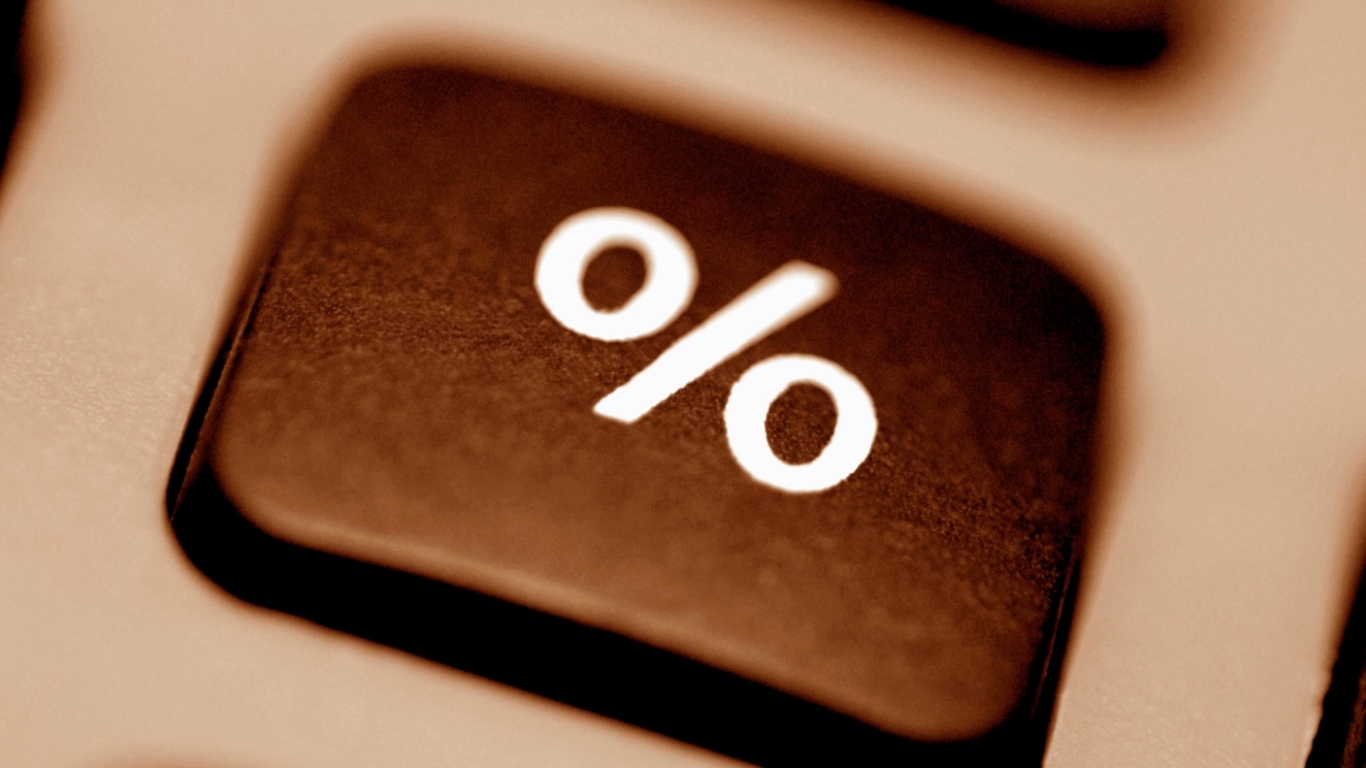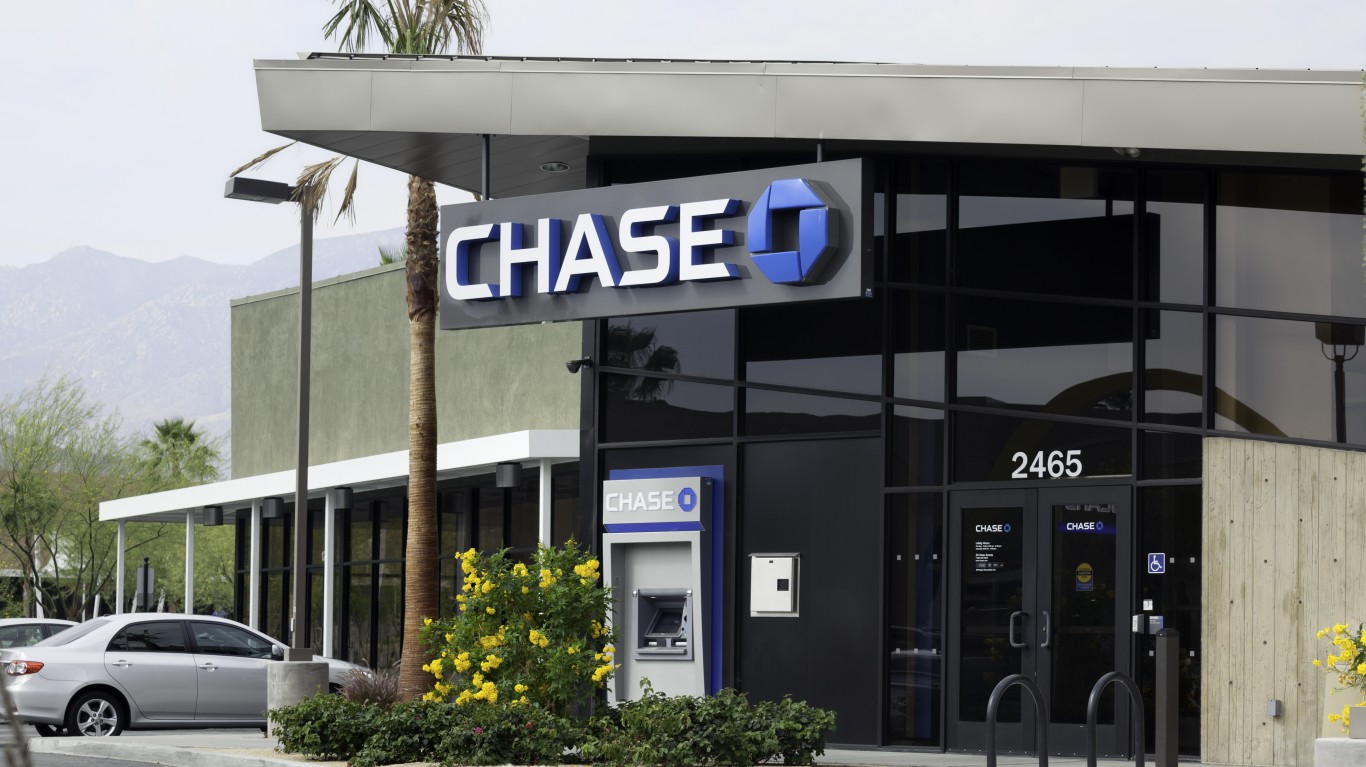
Interest rates and inflation in America remain low by historical standards. As 2019 has now faded away and turned into 2020, investors, business owners and borrowers need to pay attention to where interest rates are heading in the year ahead. The U.S. Federal Reserve may be on pause for most of 2020, and now that a phase-one trade deal has been announced (though still unsigned), there has been a growing sense that investors shouldn’t have to worry about those endless recession calls from prior months for quite some time. Of course, tension with Iran is rising, and North Korea has been more vocal again, but geopolitical events tend to have short-term rather than long-term negative impacts on the financial markets.
24/7 Wall St. wanted to take a look at where interest rates are heading in 2020, but this also pertains to credit market metrics for consumers and businesses alike. The Federal Reserve’s federal funds rate closed out 2020 in the 1.50% to 1.75% target range, far lower than what had been expected a year earlier when it looked like Fed Chair Jerome Powell was going to try to raise rates up to another full point.
We have outlined several issues regarding interest forecasts for 2020. The most likely view from the start of 2020 is that Wall Street would find more accommodation via rate cuts as a positive for stocks, barring any economic shocks, while a rate hike would likely be interpreted as a hawkish Fed similar to what was seen in 2018. And interest rates may move back and forth before taking any steady direction as 2020 begins to mature.
The latest vote of the Federal Open Market Committee (FOMC), at the last meeting of 2019, as expected, was to keep the federal funds interest rate flat. Based on the latest information available, the current monetary policy stance has been deemed as appropriate by the Fed as labor market conditions remain strong and as inflation remains near the FOMC’s symmetric 2% objective. The so-called dot plot of individual projections inside the Fed at the December FOMC meeting effectively signaled no rate hike in 2020. There is still a chance that a rate cut won’t even be expected in 2020.
The release of the latest FOMC Minutes, from after the start of 2020 (for December’s meeting), boiled down to this one headline from the Dow Jones Newswire: Interest Rates Likely on Hold As Long as Economy Remains Steady.
There is also the notion that the Fed doesn’t like to make major interest rate changes during a presidential election year. This “election year hold” has not always held true, but forecasters just are not looking for very much from the Fed this year. It’s even easy to argue that there is a building consensus that interest rates may remain unchanged for all or the bulk of 2020.
The CME FedWatch Tool predicts that there is greater than a 50% chance that fed funds are in the same 1.50% to 1.75% target range at the July 29, 2020, FOMC meeting. The rate has a 45.6% chance of staying flat at the September 16 FOMC meeting, with the next greatest odds being 37.2% that it will be in a range of 1.25% to 1.50%.
The 10-year Treasury yield ended 2019 at 1.92%, down from 2.68% at the end of 2018. Its yield was as low at 1.43% and as high as 2.80% during 2019. In short, the 10-year yield would have to rise about 90 basis points before hitting multiyear highs. The yield was last seen at 1.83%, after global tensions have weighed on rates.
The yield on the Treasury’s 30-year long bond ended 2019 at about 2.39%, versus 3.02% at the end of 2018. The long bond’s range of 1.90% to 3.13% over the past year would mean that there would need to be roughly a 75-basis point rise before new multiyear high yields are put in. As far as how things have gone so far in 2020, the yield was last seen at 2.31%.
One issue to consider on a somewhat cynical level is that there is becoming a global conflict of interest against interest rate hikes. The Treasury’s site showed that the January 6, 2020, total public outstanding debt was $23.177 trillion, or $17.164 trillion in direct debt held by the public. The average interest rate paid by the Treasury at the end of 2019 was 2.36%, and that was down from 2.455% at the end of 2018, while still up from 2.126% at the end of 2017 and up even from the 1.986% average yield paid at the end of 2016. Adding close to a full average percentage point of yields paid by the Treasury at this point would come with a price tag of an additional $200 billion in debt servicing costs.
The Federal Reserve’s own balance sheet is now back up close to $4.2 trillion at the start of 2020, after having gone from a peak of $4.5 trillion in prior years down to about $3.75 trillion or so in August of 2019. The Fed has been buying Treasury bills from eligible banks to help bolster the level of liquidity in the financial system. Perhaps most importantly, the Federal Reserve Bank of New York has been adding billions of dollars per day (close to $100 billion on January 7) for short-term liquidity via overnight repurchase agreements and a 14-day repo.
Europe and Japan still have trillions of dollars worth of negative interest rates. While this is not sustainable for years and years (or is it?), it’s hard to imagine rates in the United States getting much higher without a large majority of those negative interest rates getting back to flat or slightly positive. That said, this negative interest rate scenario is not supposed to be a long-term issue as it crams out financial lenders.
Bankrate.com has issued some of its 2020 interest rate forecasts. The 30-year fixed-rate mortgage is predicted to move back and forth over the 4.00% mark for much of 2020, which Bankrate believes is low enough to facilitate home buying and provide ample refinancing opportunities. That said, the group sees rates trend higher toward the back half of the year as inflation readings move above 2%. Consumers with good credit are expected to find 2020 auto loan rates comparable to 2019, with only slight increases by year’s end, and with an average of 4.75% for a five-year new car loan.
All this ties with expectations of about 7.4% gains for the Dow in 2020, after the Dow Jones industrial average rose by 22.3% and the S&P 500 rose by 28.9% at the end of 2019. Stay tuned, because a lot can change year-forward predictions when you are just a few days into the new year.
Are You Ahead, or Behind on Retirement? (sponsor)
If you’re one of the over 4 Million Americans set to retire this year, you may want to pay attention.
Finding a financial advisor who puts your interest first can be the difference between a rich retirement and barely getting by, and today it’s easier than ever. SmartAsset’s free tool matches you with up to three fiduciary financial advisors that serve your area in minutes. Each advisor has been carefully vetted, and must act in your best interests. Start your search now.
Don’t waste another minute; get started right here and help your retirement dreams become a retirement reality.
Thank you for reading! Have some feedback for us?
Contact the 24/7 Wall St. editorial team.
 24/7 Wall St.
24/7 Wall St.

